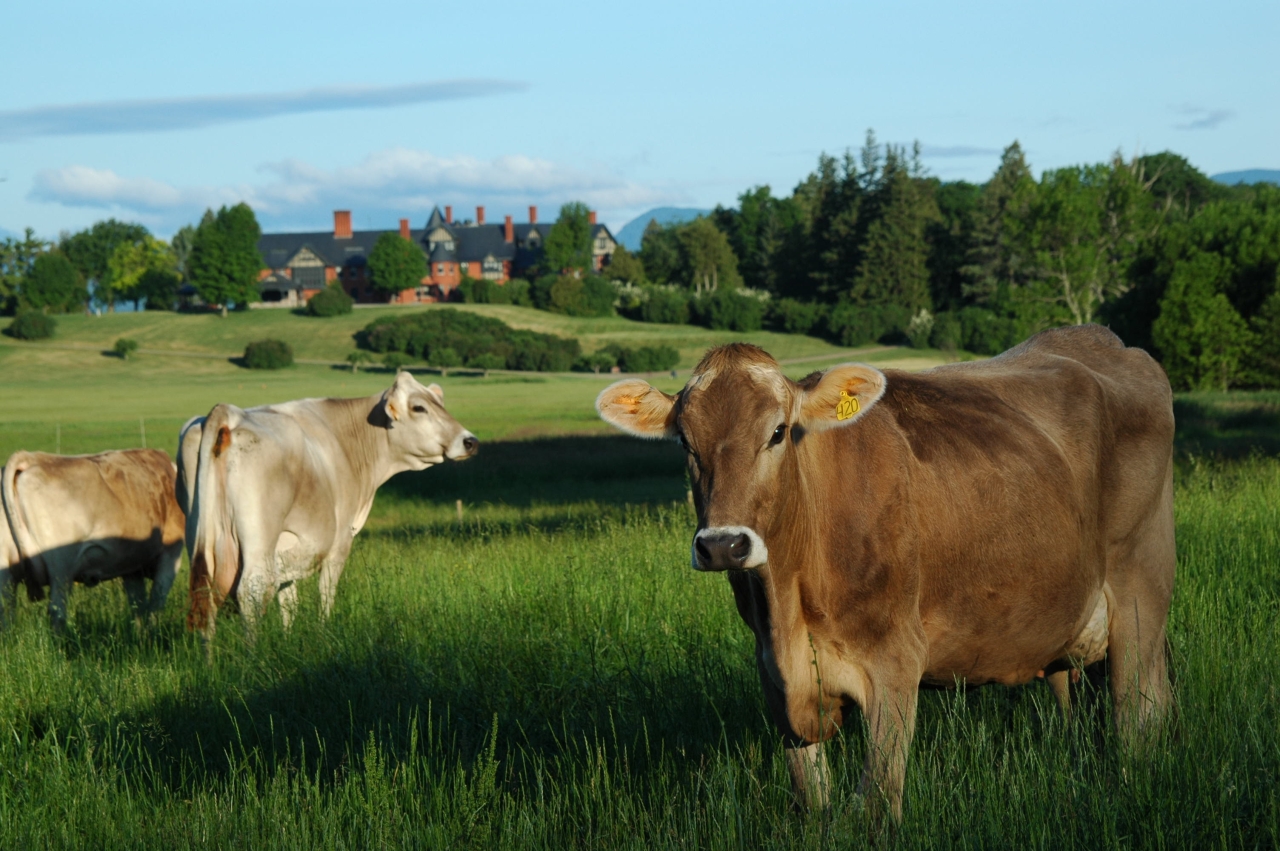The nonprofit Shelburne Farms was founded in 1972 with a vision and a belief. The vision was for a thriving and just world rooted in nature and community. The belief was that education was the path to get us there, and from the beginning, we have offered programs for youth and operated in service to teachers and schools.
Founding: 1972
The education nonprofit Shelburne Farms Resources (now simply Shelburne Farms), was founded in 1972 by the children of Derick Webb–great grandchildren of estate founders Lila and Seward Webb. The children had grown up in the turbulent sixties and were passionate about the issues of that era: protecting the environment, claiming civil rights, controlling urban sprawl, advocating for peace.
They’d also grown up at Shelburne Farms, the 19th century agricultural estate of their forebears. It was now facing mounting property taxes, crumbling infrastructure, and intense development pressure, even as their father continued to dairy farm the core property. With the independent nonprofit, the adult children aspired to address the issues they were impassioned about by tapping into the farm landscape at hand. Education was the nonprofit’s core purpose, then and now. And the vision, then and now, was a thriving world rooted in nature and community.
Early Days: 1972-1984
With use of the property but no real assets, the nonprofit launched startup activities: summer camps that grew vegetables for new local farmer’s markets, teacher workshops, school field trips, community gardens, a canning center, and outdoor community events. It also began making plans to revitalize the farmland, forests, landscape, and buildings as a campus to inspire learning about sustainability.
Solidifying: 1984-1999
In 1984, Derick died, bequeathing the property to the young nonprofit. His gift made so much possible, but with no endowment and an annual cash flow shortfall, the organization implemented a limited development plan to provide startup funds, and launched its first capital campaign to build education programs, open the property to the public, and stabilize its finances. The gamble paid off throughout the 1980s and early 1990s, as the organization matured, its programs grew, and community access to the farm blossomed. In 1994, the nonprofit reacquired 400 acres originally part of the core farm–Southern Acres.
Collaborating: 2000 to Today
As a long-time pioneer in environmental education and Education for Sustainability, and with an unparalleled campus for learning, the nonprofit now extends its impact by collaborating for shared educational goals with organizations and people across the globe. Our programs have earned national and international recognition from groups including the United Nations University, and they continue to focus on serving educators—an average of 1,500 each year—who, over their careers, can inspire so many students. And we sustain a working farm dedicated to sustainable and local agriculture. This land—and the ways we care for and use it—offer the most powerful lessons in what a thriving future for all can look like.
